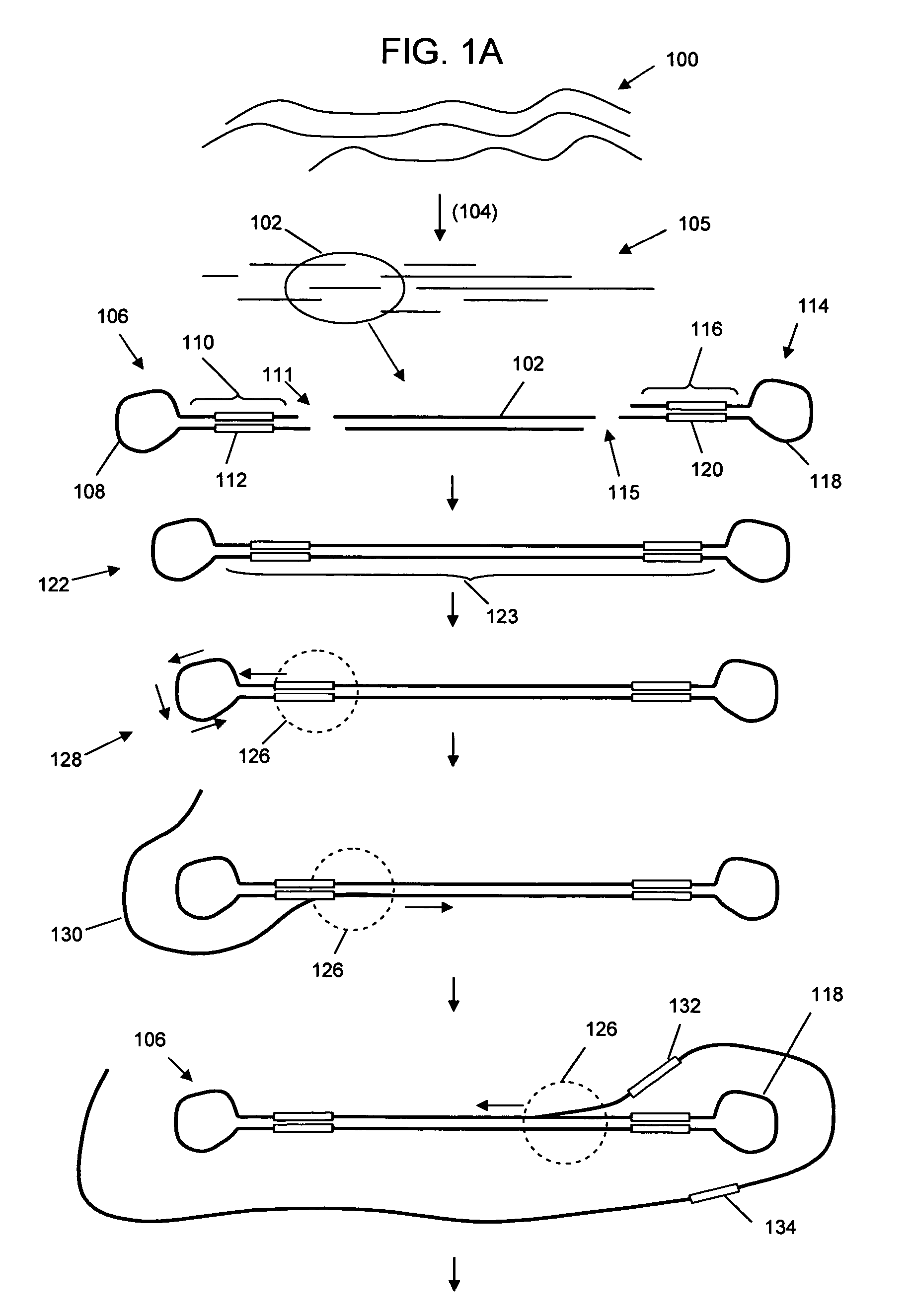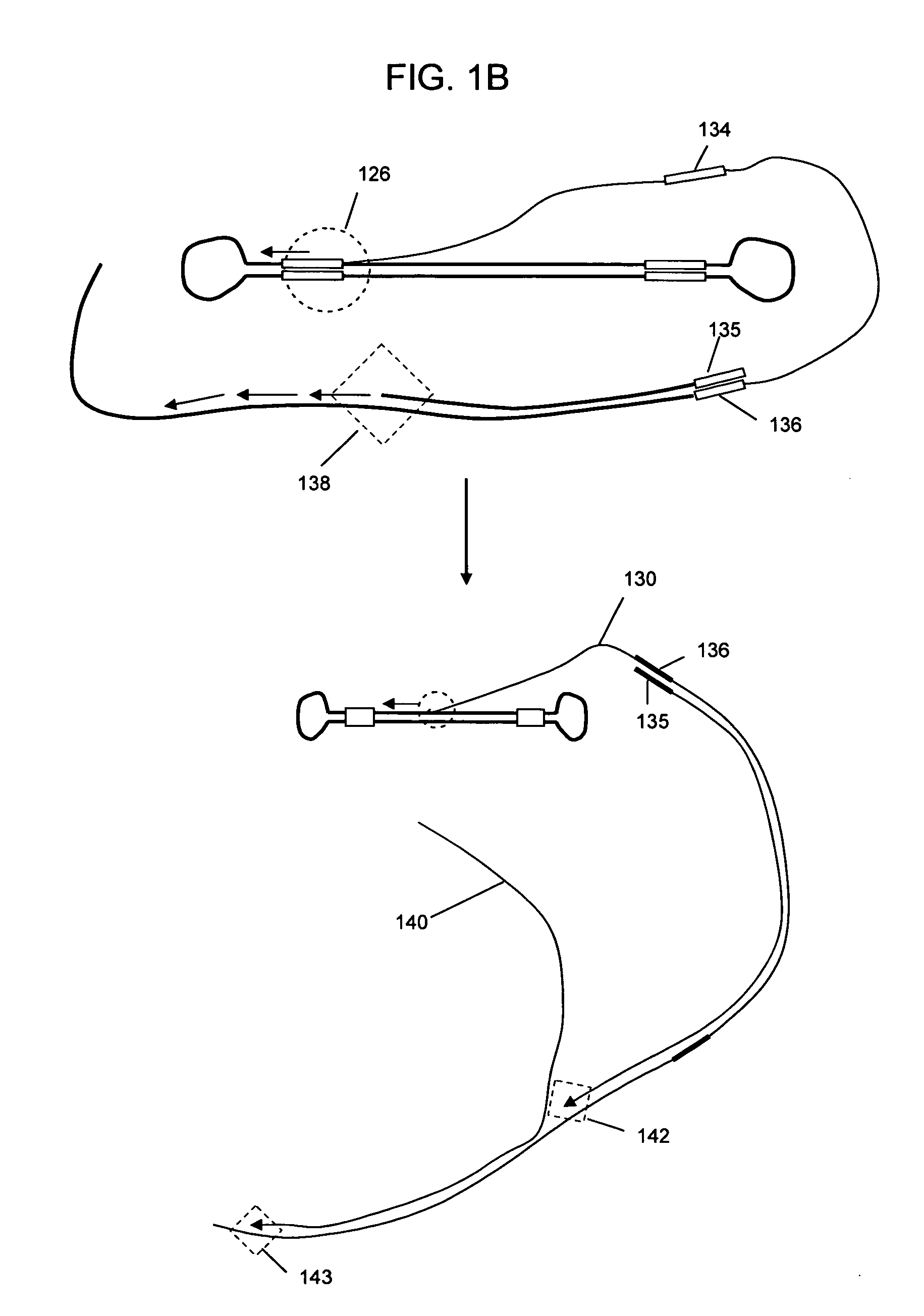Selective genome amplification
a genome amplification and sequencing technology, applied in the field of selective genome amplification, can solve the problems of limiting the application of dna sequencing to the analysis of relatively small genomes, limiting the application of dna sequencing to relatively small genomes, such as viral and prokaryotic genomes
- Summary
- Abstract
- Description
- Claims
- Application Information
AI Technical Summary
Benefits of technology
Problems solved by technology
Method used
Image
Examples
example
[0064]An example of selective amplification was carried out using two hairpin adaptor sequences self ligated to each other. Panel A of FIG. 2 shows the sequence of single hairpin adaptor. The dumbbell shaped DNA for the assay was generating by ligating two hairpin adaptors at the GATC sequence. The three nucleotide loop is indicated in italics typeface, the T7 promoter with a transcription direction facing towards the loop is indicated in bold and boxed typeface, the capture primer sequence is indicated un underlined typeface, and the overhand sequence is depicted in double underline typeface.
[0065]FIG. 3 shows a schematic amplification using the self-ligated hairpin adaptors. The template sequence is shown in uppercase typeface, with the T7 promoter sequence in bold and boxed typeface, followed by leader sequence GGGAGA (SEQ ID NO:03) in bold typeface. The 4 base overhang sequence used for combining two looped DNA is in indicated in double underline typeface. The 3 base loops on bo...
PUM
| Property | Measurement | Unit |
|---|---|---|
| temperature | aaaaa | aaaaa |
| temperature | aaaaa | aaaaa |
| temperature | aaaaa | aaaaa |
Abstract
Description
Claims
Application Information
 Login to View More
Login to View More - R&D
- Intellectual Property
- Life Sciences
- Materials
- Tech Scout
- Unparalleled Data Quality
- Higher Quality Content
- 60% Fewer Hallucinations
Browse by: Latest US Patents, China's latest patents, Technical Efficacy Thesaurus, Application Domain, Technology Topic, Popular Technical Reports.
© 2025 PatSnap. All rights reserved.Legal|Privacy policy|Modern Slavery Act Transparency Statement|Sitemap|About US| Contact US: help@patsnap.com



